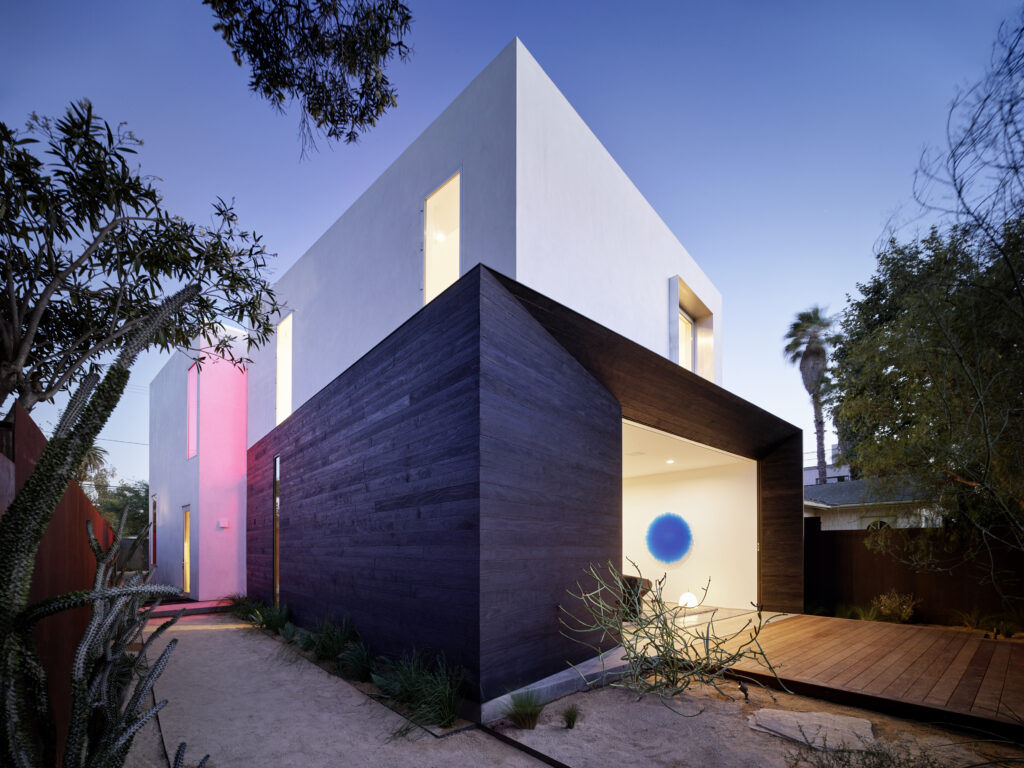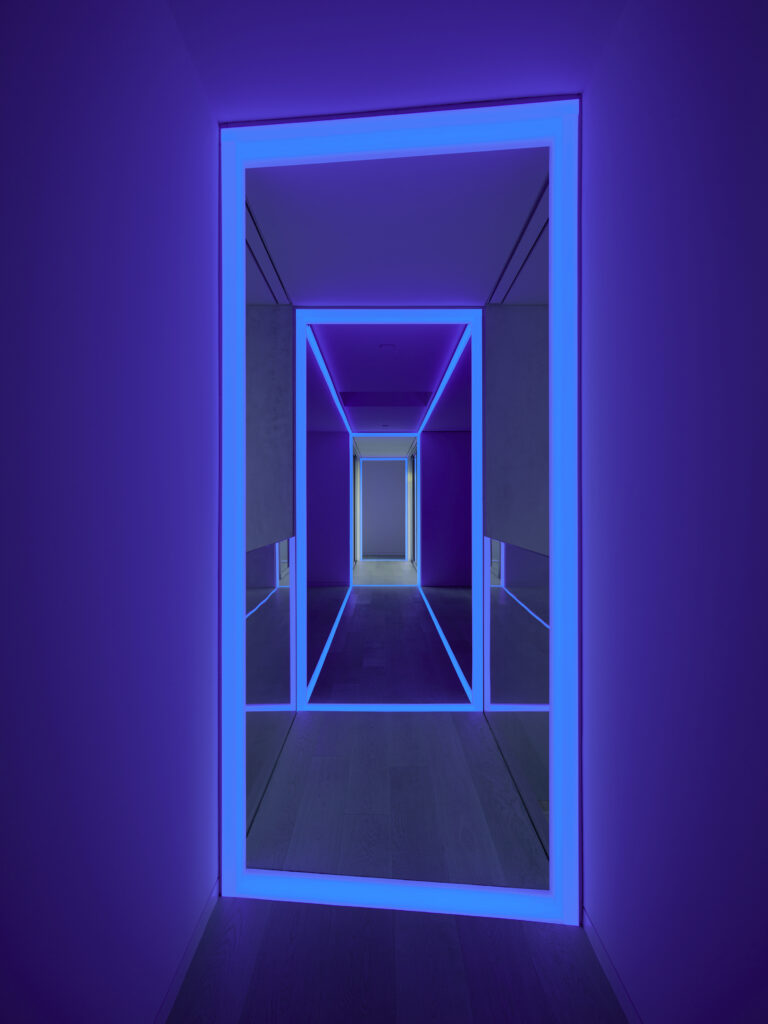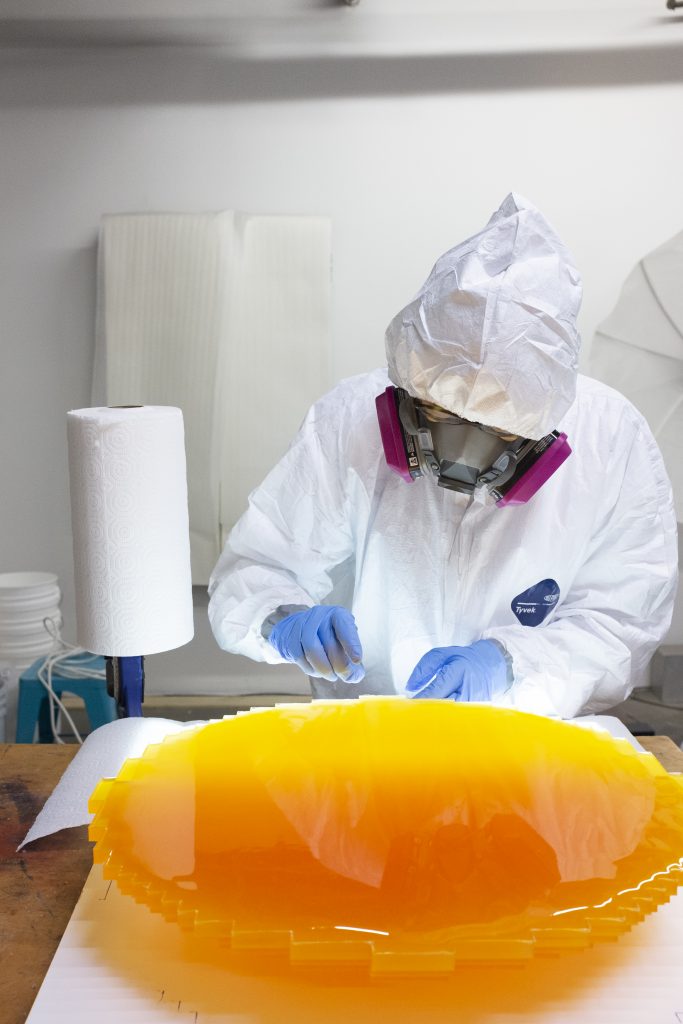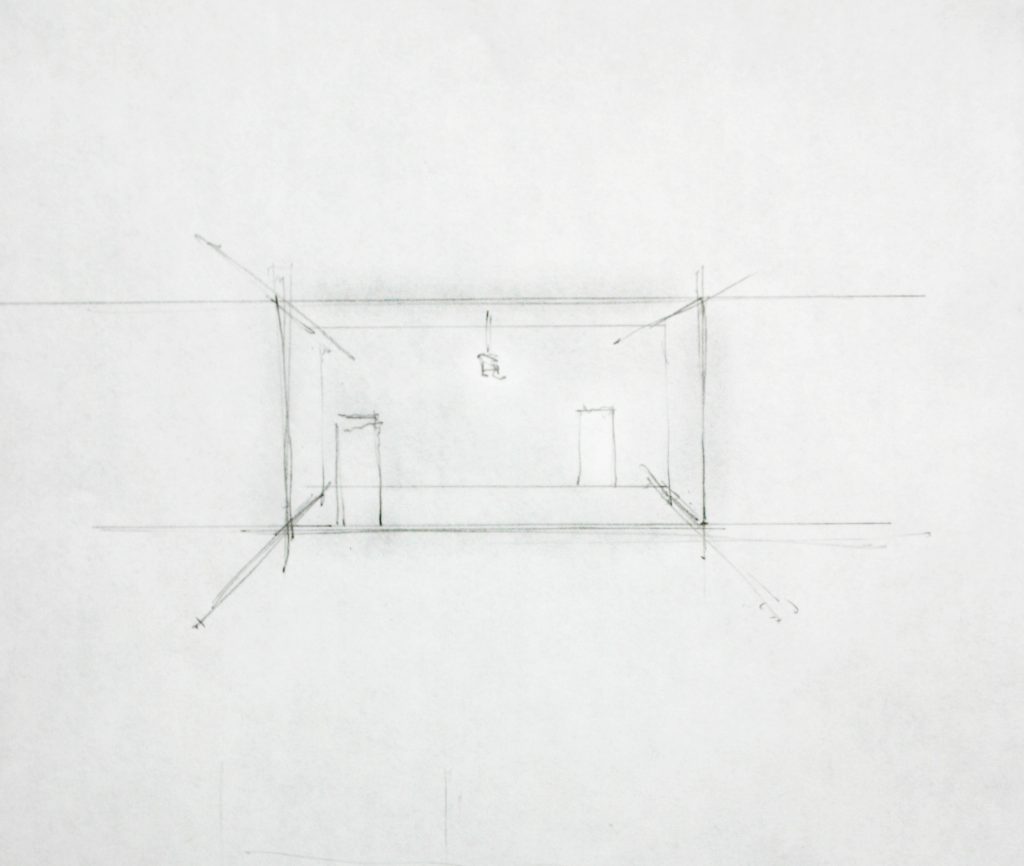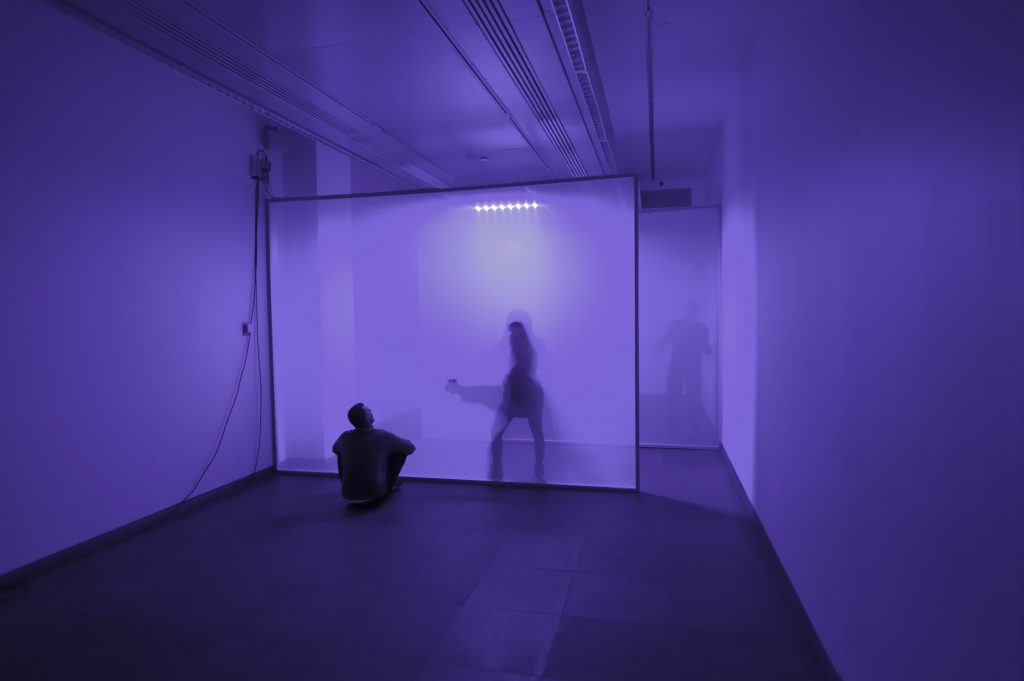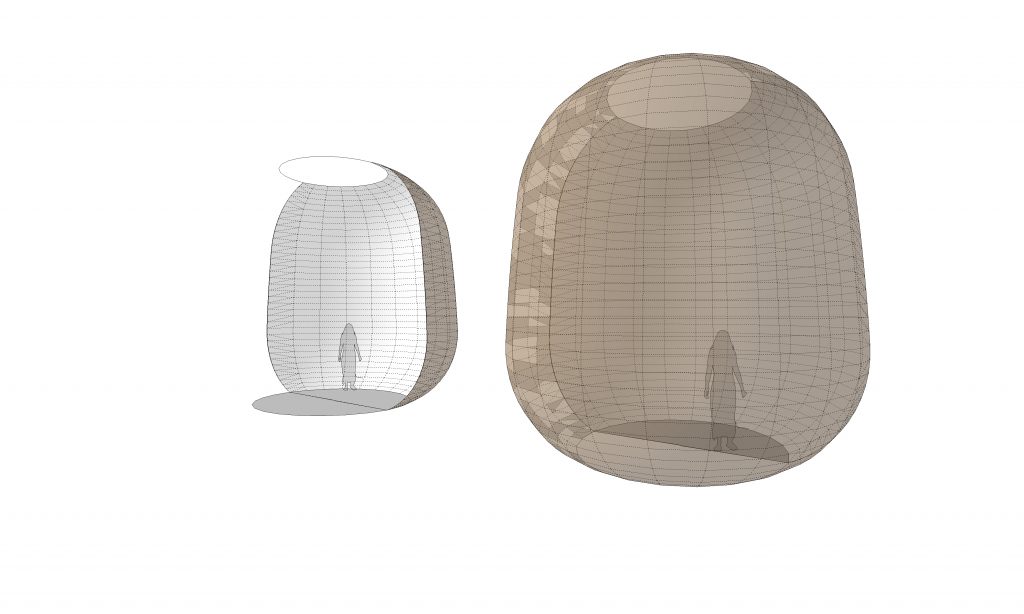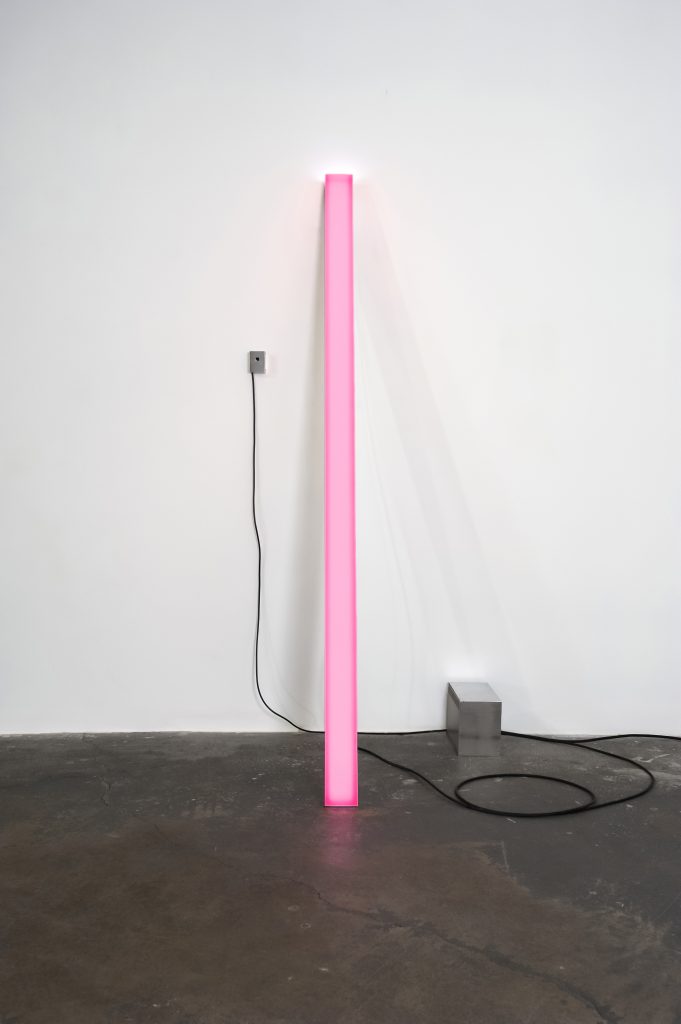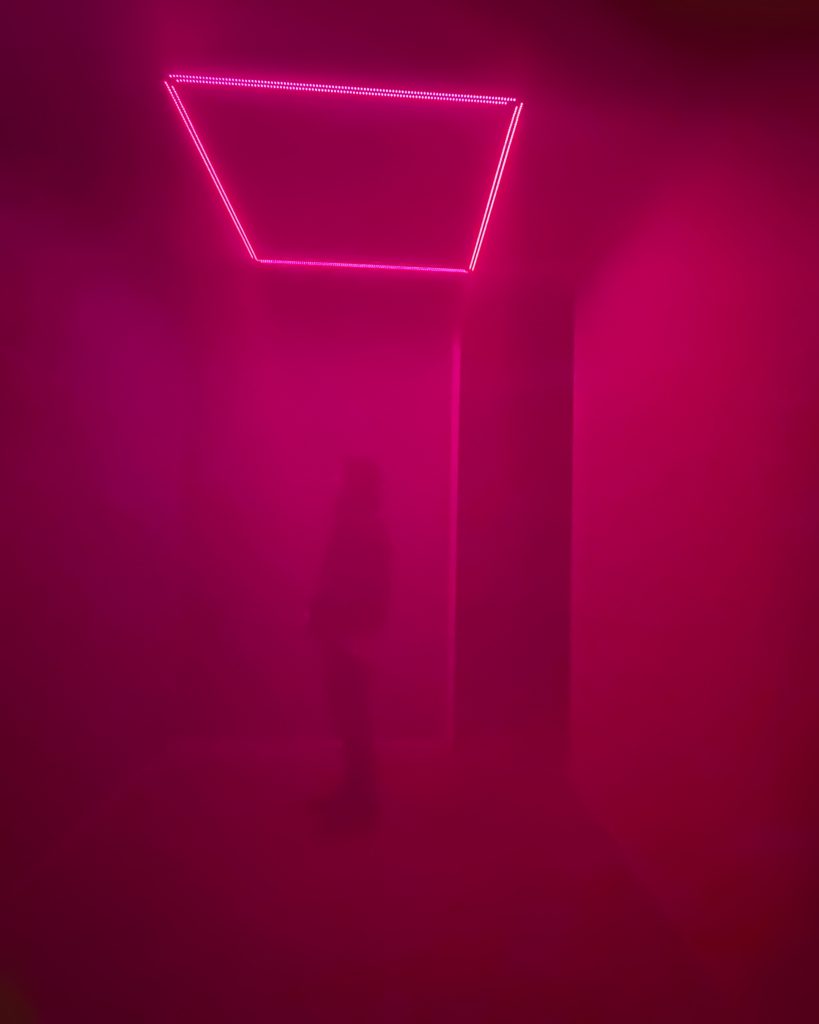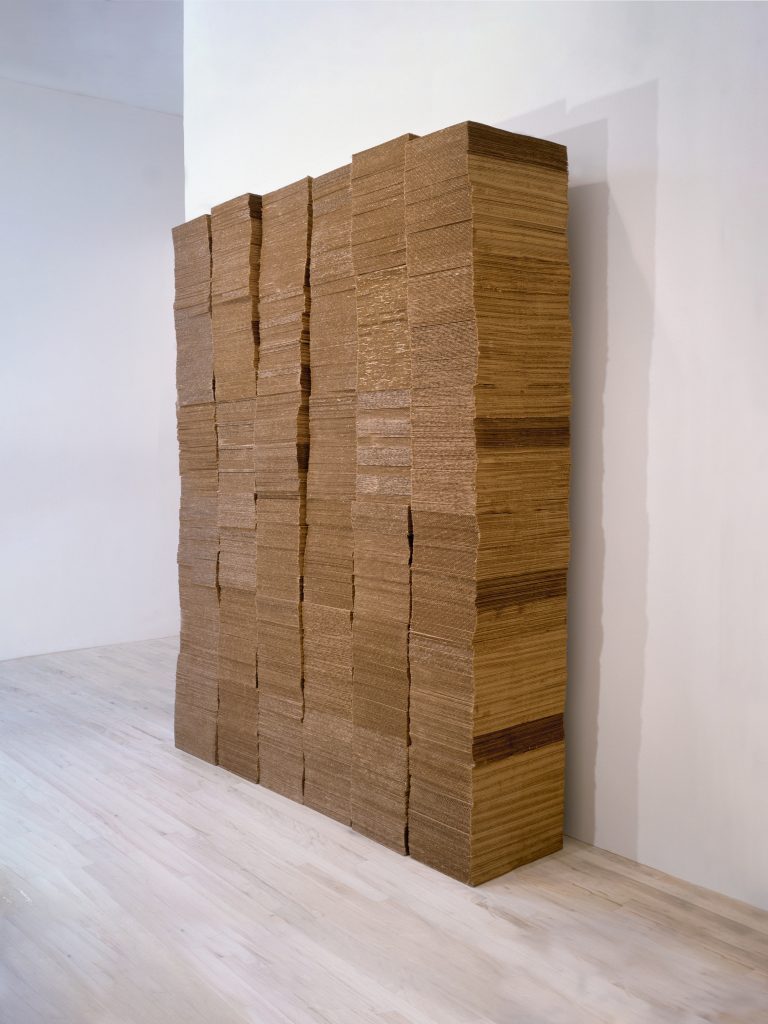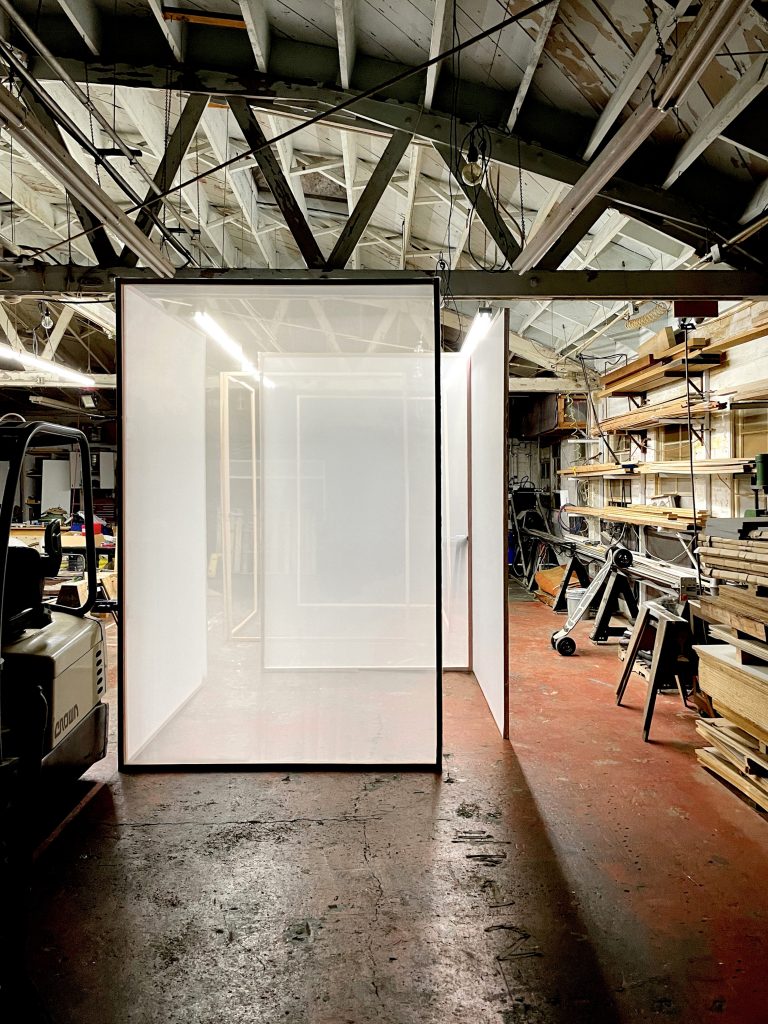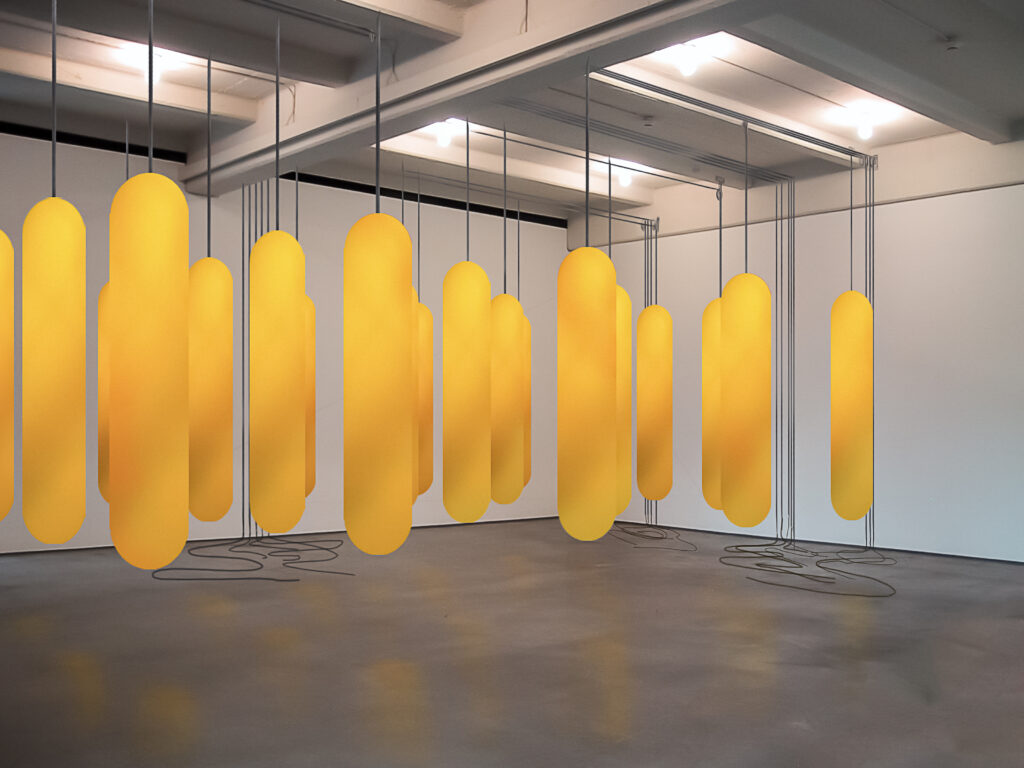
reVIBRATION No. 01 (rV01), 2004 – Study
In 2004, Johannes Girardoni created a study of reVIBRATION No. 01 (rV01), a project abstract for an interactive installation that has since served as the foundation for the studio’s work in the research of artificial sensing and its impact on perception and cognition.
“reVIBRATION No. 01 is a room-size sculptural installation comprising a field of repeating cylindrical elements suspended in a grid pattern. Sensors capture the ‘light’ of this environment and its contents, including its visitors. Software converts the light into ‘sound,’ which is projected back in real-time, thus yielding an intangible equivalent of three-dimensional space.
rVO1 is the first in a series of poly-sensory sculptural installations that explore the interface of space, form, sound, light, and experience. The work involves a minimum of twelve cylindrical structures vertically suspended in a grid pattern. These forms are softened by rounded contours and are made of beeswax mixed with yellow pigment. The room will be under continuous surveillance with a system of sensors that capture the ‘light waves’ of the room. These recorded light waves are translated in real-time into ‘sound waves’ and fed back into the space.
The suspended elements will be distributed so visitors can comfortably move between them, yet close enough that the forms visually and physically have a charged relationship. Visitors are invited to travel around and into the sculpture. The farther within a participant goes, the more intimate the space and the viewer’s experience of it will become. Towards the center of the ‘field,’ participants will experience themselves surrounded mainly by the forms, with only glimpses of the exterior. At any given moment, the viewers’ presence and movement affect the sound the work emits.
By interpreting physical matter as waves and transposing the waves into sound, reVIBRATION No. 01 explores the blurring of boundaries between the physical and immaterial, object and subject, seeing and being seen, color, form, and sound.”
Johannes Girardoni, New York, 2004
